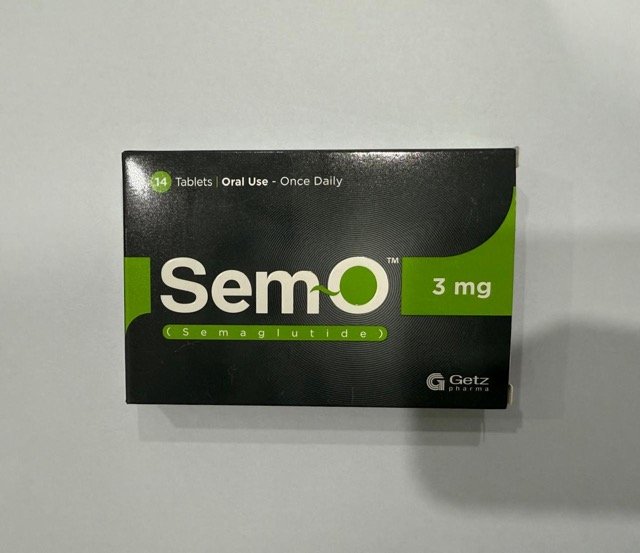Isoproterenol (Isuprel) is a sympathomimetic drug that has structural similarity to epinephrine. However, it acts exclusively on the beta receptors.
Isoproterenol Uses:
- Its indication includes:
- mild or transient episodes of heart block that does not require an electric shock or pacemaker therapy.
- Serious episodes of heart block and Adams-Stokes attacks except when caused by ventricular tachycardia or fibrillation are also indications of using this drug.
- It can also be used in cardiac arrest until electric shock or pacemaker therapy is available. However, it can cause bronchospasm during anesthesia.
- It can also be used as an adjunct to fluid and electrolyte replacement therapy and other drugs and procedures in the treatment of hypovolemic or septic shock and low cardiac output states including decompensated heart failure and cardiogenic shock.
- It should be noted that the use of isoproterenol in advanced cardiac life support (ACLS) has largely been supplanted by the use of other adrenergic agents (eg, epinephrine and dopamine).
- The use of isoproterenol for bronchospasm during anesthesia and cardiogenic, hypovolemic, or septic shock is no longer preferred.
-
Off Label Use of Isoproterenol in Adults:
- Bradycardia that is due to significant hemodynamic compromise
- Cardiogenic shock.
- Provocation during tilt table testing for syncope
- Provocation of ventricular arrhythmias in suspected arrhythmogenic right ventricular cardiomyopathy.
- Short QT-syndrome and ventricular tachycardia and ventricular fibrillation storm
- Torsades de pointes.
- Beta-blocker overdose.
- Electrical storm associated with Brugada syndrome.
- Temporary control of bradycardia in denervated heart transplant patients unresponsive to atropine
- Ventricular arrhythmias due to AV nodal block.
Isoproterenol (Isuprel) Dose in Adults:
It is important to know that patients can exhibit dose-dependent vasodilation due to the unopposed beta -agonism elicited by isoproterenol.
Isoproterenol (Isuprel) Dose in the treatment of Bradyarrhythmias, AV nodal block:
-
Continuous IV infusion:
- Usual range: it is given as 2 to 10 mcg/minute. It can be titrated up to the patient's response.
Dose in the treatment of Brugada syndrome with an electrical storm (off-label):
- IV bolus:
- It is given initially as 1 to 2 mcg, followed by a continuous infusion of 0.15 to 0.3 mcg/minute for 1 day.
- The sequence can be repeated if ventricular tachycardia or fibrillation recurs.
Isoproterenol (Isuprel) Dose in the treatment of Cardiogenic shock due to bradycardia (off-label):
-
Continuous IV infusion:
- 2 to 20 mcg/minute.
Isoproterenol (Isuprel) Dose in the treatment of Provocation during tilt table testing for syncope (off-label):
-
Continuous IV infusion:
- Initial: it is administered as 1 mcg/minute. It can be increased as necessary based on response. The maximum dose is 5 mcg/minute.
It should be noted that the timing of initiation and dose adjustment during the test should be consulted from local hospital guidelines.
Isoproterenol (Isuprel) Dose in the treatment of Provocation of ventricular arrhythmias in suspected arrhythmogenic right ventricular cardiomyopathy (off-label):
- It is administered as 45 mcg/minute for 3 minutes regardless of initial heart rate, followed by evaluation for arrhythmia.
The test should be performed after withdrawing beta-blockers, calcium channel blockers, and other antiarrhythmic agents for at least 5 half-lives.
Isoproterenol (Isuprel) Dose in the treatment of refractory torsade de pointes (off-label):
-
Continuous IV infusion:
- The usual range is 2 to 10 mcg/minute.
- The dose should be titrated up to the patient's response.
Isoproterenol (Isuprel) Dose in Childrens:
It is important to note that patients can exhibit dose-dependent vasodilation due to the unopposed beta -agonism elicited by isoproterenol.
Isoproterenol (Isuprel) Dose in the treatment of severe bradycardia; AV nodal block: Limited data available:
-
Infants, Children, and Adolescents:
-
Continuous IV infusion:
- It is given as 0.05 to 0.5 mcg/kg/minute.
- The dose should be titrated up to the effective dose. The doses as high as 2 mcg/kg/minute are needed in some patients.
- The usual adult range is 2 to 10 mcg/minute.
-
Pregnancy Risk Factor C
- Studies on animal reproduction are still not being done.
- It can cause contractions in the uterus at term.
Isoproterenol use during breastfeeding:
- It is not yet known if it is found in breast milk.
- When administering lactation to women who are breastfeeding, be cautious.
Dose in Kidney Disease:
No specific dose adjustments are indicated in renal disease.
Dose in Liver disease:
According to the literature, no dose adjustments are required in hepatic impairment.
Side effects of Isoproterenol (Isuprel):
-
Cardiovascular:
- Adams-Stokes Syndrome
- Angina Pectoris
- Flushing
- Hypertension
- Hypotension
- Pallor
- Palpitations
- Paradoxical Bradycardia (With Tilt Table Testing)
- Tachyarrhythmia
- Ventricular Arrhythmia
- Ventricular Premature Contractions
-
Central Nervous System:
- Dizziness
- Headache
- Nervousness
- Restlessness
- Seizure (Adamsstokes)
-
Dermatologic:
- Diaphoresis
-
Endocrine & Metabolic:
- Hypokalemia
- Increased Serum Glucose
-
Gastrointestinal:
- Nausea
- Vomiting
-
Neuromuscular & Skeletal:
- Tremor
- Weakness
-
Ophthalmic:
- Blurred Vision
-
Respiratory:
- Dyspnea
- Pulmonary Edema
Contraindications to Isoproterenol (Isuprel):
- Angina
- Preexisting ventricular arrhythmias.
- Tachyarrhythmias
- Cardiac glycoside intoxication.
Warnings and precautions
-
Cardiovascular disease
- Patients with heart disease, such as coronary artery disease, should not use it. It can increase myocardial oxygen demands, which could lead to ischemia.
-
Diabetes:
- Patients with diabetes mellitus should use it with caution. It can temporarily increase blood glucose levels.
-
Distributional shock
- Distributive shock is a reason to avoid its use. It can further reduce systemic vascular resistance (SVR), which may lead to hemodynamic compromise.
-
Hyperthyroidism:
- Hyperthyroidism patients should exercise caution. High-risk patients can be subject to thyroid storm.
Isoproterenol: Drug Interaction
|
Risk Factor C (Monitor therapy) |
|
|
AtoMOXetine |
May enhance the hypertensive effect of Sympathomimetics. AtoMOXetine may enhance the tachycardic effect of Sympathomimetics. |
|
Cannabinoid-Containing Products |
May enhance the tachycardic effect of Sympathomimetics. Exceptions: Cannabidiol. |
|
COMT Inhibitors |
May decrease the metabolism of COMT Substrates. |
|
Doxofylline |
Sympathomimetics may enhance the adverse/toxic effect of Doxofylline. |
|
Guanethidine |
May enhance the arrhythmogenic effect of Sympathomimetics. Guanethidine may enhance the hypertensive effect of Sympathomimetics. |
|
Solriamfetol |
Sympathomimetics may enhance the hypertensive effect of Solriamfetol. |
|
Sympathomimetics |
May enhance the adverse/toxic effect of other Sympathomimetics. |
|
Tedizolid |
May enhance the hypertensive effect of Sympathomimetics. Tedizolid may enhance the tachycardic effect of Sympathomimetics. |
|
Theophylline Derivatives |
Isoproterenol may decrease the serum concentration of Theophylline Derivatives. Exceptions: Dyphylline. |
|
Risk Factor D (Consider therapy modification) |
|
|
Cocaine (Topical) |
May enhance the hypertensive effect of Sympathomimetics. Management: Consider alternatives to use of this combination when possible. Monitor closely for substantially increased blood pressure or heart rate and for any evidence of myocardial ischemia with concurrent use. |
|
Linezolid |
May enhance the hypertensive effect of Sympathomimetics. Management: Reduce initial doses of sympathomimetic agents, and closely monitor for enhanced pressor response, in patients receiving linezolid. Specific dose adjustment recommendations are not presently available. |
|
Risk Factor X (Avoid combination) |
|
|
Inhalational Anesthetics |
May enhance the arrhythmogenic effect of Isoproterenol. |
Monitoring parameters:
- ECG.
- Heart rate, respiratory rate, arterial blood gas, and arterial blood pressure.
- CVP.
- Serum glucose, serum potassium, and serum magnesium levels.
How to administer Isoproterenol (Isuprel)?
IV: It is given in infusion form intravenously.
Mechanism of action of Isoproterenol (Isuprel):
It stimulates beta-1 and beta-2 receptors, resulting in relaxation and contractility of bronchial, GI and uterine smooth muscles, increased heart rate, and vasodilation peripheral vasculature.
The onset of action:
- IV: Immediate onset of action.
Duration:
- IV: 10-15 minutes
Metabolism:
- It is metabolized via conjugation in many tissues including hepatic and pulmonary
Half-life elimination:
- 2.5-5 minutes
Excretion is via urine, primarily as sulfate conjugates)
International Brand Names of Isoproterenol:
- Isuprel
- Aleudrina
- Antasthmin
- Asmadren
- Bellasthman Medihaler
- Dyspnoesan
- Erydin
- Euspiran
- Ingelan
- Isolin
- Isomel
- Isomenyl
- Isoprenalin
- Isoprenalina Cloridrato
- Isoprenalinhydrochlorid-Braun
- Isuprel
- Isuprel HCl
- Isuprel Inj
- Isupril
- Kattwilon N
- Medihaler-Iso
- Min-I-Jet Isoprenaline
- Novodrin
- Proterenal
- Proternol L
- Saventrine
- Sedansol Iso
- Sooner
Isoproterenol Brand Names in Pakistan:
Isoproterenol Injection 1 mg/ml in Pakistan |
|
| Saventrine | Pharmix Laboratories (Private) Limited. |



.jpeg)



